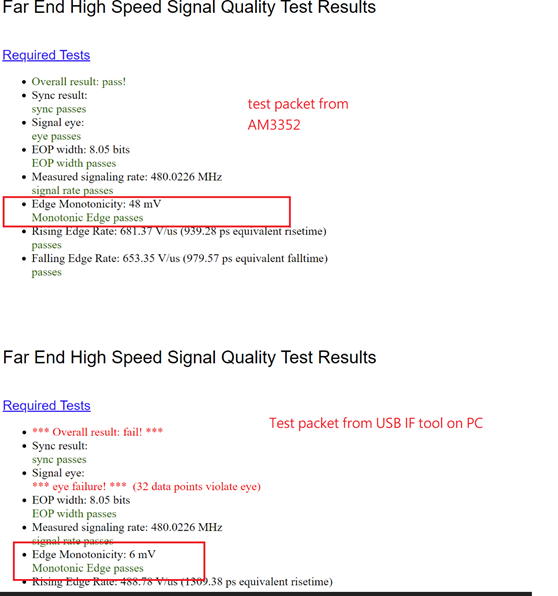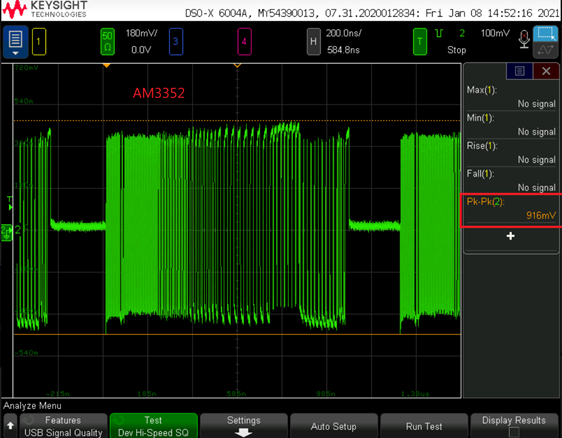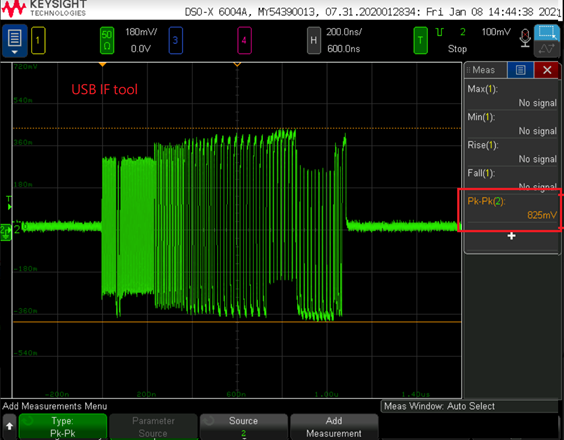We have a problem in edge monotonicity of USB SI testing. The value tested is around 48mv~6xmv. (criteria is max 50mv).
- Since the USB port is the host port of the AM3352, so the test packet is generated from AM3352.
- We have compared the test packet between AM3352 generated and PC generated. Found that the waveform amplitude from AM3352 is larger than USB IF tool generated. The shapes are also slightly different.
- Can you please give us recommendations how to improve the edge monotonicity of USB SI?
Waveform from AM3352:
Waveform from USB IF Tool:
Thanks,
Nick




